Iran National Railway: World's Most Breathtaking Routes
Stretching from the Caspian Sea's picturesque shores to the Persian Gulf's fertile plains and crossing two mountain ranges as well as highlands, plains, forests, rivers, and four different climatic areas, the 1394 km Iran National Railway is hailed as one of the greatest engineering marvels of the 20th century.
Iran National Railway, also known as Trans-Iranian Railway, connects Iran to key destinations both within the country and beyond. Except for the Southeast, the railway system covers most of Iran's territory, facilitating transportation and offering routes for trade. Recognized for its outstanding universal value, it gained inscription on the UNESCO World Heritage list in 2021.
This blog will explain everything you need to know about Iran's national railway, including its history, construction, length, map, international links and explore some mind blowing sceneries on the Iran national railway.
History of Iran National Railway
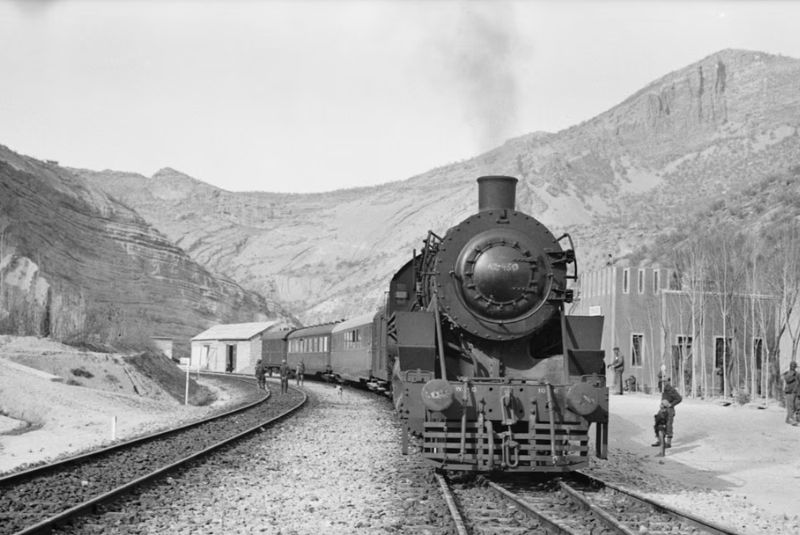
It all began in 1872 when an English businessman proposed the idea of a national railway line to Nasser al-Din Shah Qajar. Eager to embrace progress, the Shah granted permission, but alas, the plan was thwarted by Russian interference.
Undeterred, European governments, particularly the French, vied for the opportunity to construct railways in Iran. In 1882, the French secured the concession to establish the Rasht railway line, connecting Tehran to Bushehr. However, their ambitious commitments were derailed by Russian meddling, leaving the dreams of a connected Iran unfulfilled.
In 1886, a glimmer of hope emerged as the French signed a contract to build the Hazrat Abdolazim railway in Tehran. This agreement included the Tehran to Bushehr railway line, but alas, only the Tehran railway station materialized. For the next 25 years, Western governments attempted various nationwide railroad projects in Iran, yet success eluded them.
Then, in 1912, a breakthrough occurred. Iran signed a contract with Russian contractors, leading to the completion of the railway line between Jolfa and Tabriz in 1913. A vital connection was forged, but the grand vision of a comprehensive railway network across Iran remained tantalizingly out of reach.
Finally, the stage was set for a monumental endeavor during the Pahlavi dynasty in 1927. It was Reza Shah, the visionary Iranian monarch, who conceived the idea of the Trans-Iranian Railway. With the National Development Fund as its financial backbone, the project aimed to link Tehran, the heart of the nation, to Bandar Imam Khomeini on the southern shores of the Persian Gulf and Bandar Torkaman on the northern shores of the Caspian Sea.
| Read more: Top 10 Historical Sites of Iran
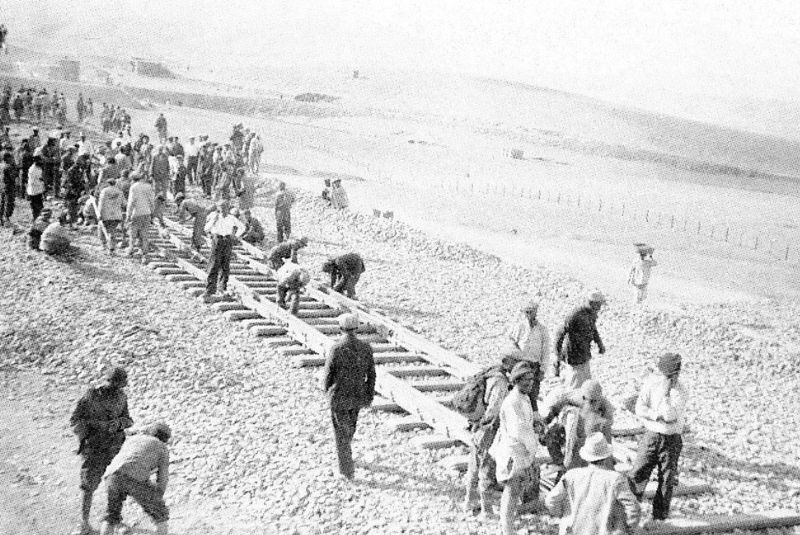
The Trans-Iranian Railway defied all odds, spanning a breathtaking 1,394 kilometers. Collaborating with 43 contractors from around the world, Iranians showcased their ingenuity in overcoming immense challenges. The railway traversed treacherous terrains, necessitating the construction of 174 large bridges, 224 tunnels (including 11 spiraling marvels), and 186 minor bridges.
Under the leadership of Reza Shah's son, Mohammad Reza Pahlavi, the railway continued to evolve. In 1961, it expanded through Bandar Shah (also known as Bandar Torkaman) to Gorgan, unveiling new horizons of connectivity. The "White Revolution" land reforms of 1963 brought further transformation, with the Trans-Iranian Railway extending its reach to connect Tehran with Mashhad, Tabriz, and Isfahan.
This grand endeavor, funded by national taxes to retain control and independence, has become a cherished heritage. The Trans-Iranian Railway proudly holds the distinction of being a UNESCO World Heritage Site, a testament to its historical and cultural significance. Today, it serves as a lifeline, fostering travel, trade, and cultural exchange, seamlessly connecting key regions of Iran.
| Find an itinerary closest to your needs: Iran Tour Packages
The Iran National Railway Construction
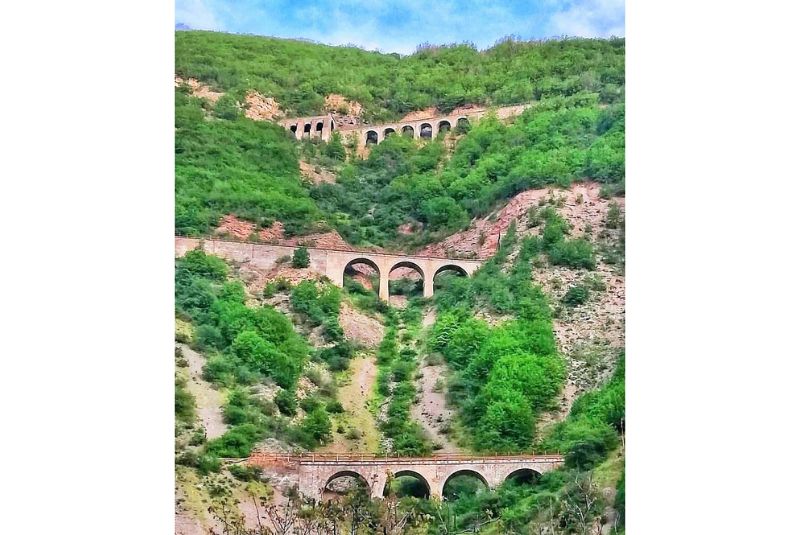
The National Railway in Iran was a remarkable project that spanned 1,394 kilometers. It was a successful collaboration between the Iranian government and three construction contractors from different countries. Unlike many early rail projects, it was funded through national taxes to avoid relying on foreign investments and maintain control.
The construction of the Trans-Iranian Railway faced various engineering and geological challenges. It involved cutting through mountains in some areas and building numerous bridges and tunnels in rugged terrain.
The construction involved overcoming formidable mountains, with gradients reaching up to 1 in 36, and the use of hillclimbing techniques like railway spirals. The railway comprised 230 tunnels, 4,100 bridges, and reached its highest point at Arak, 2,220 meters above sea level.
Some tunnels had to be abandoned due to disrupted water tables or encountering powdery gypsum and pumice that made excavation difficult. In other cases, bridges had to be built within tunnels to overcome caverns in the mountains. The project also faced challenges with limited freshwater supplies for creating durable mortar and concrete.
| Suggestion: Naghsh-e Jahan Square
Mind-Blowing Sceneries on the Iran National Railway
While traveling on the Trans-Iranian Railway, you'll be treated to some mind-blowing sceneries that will leave you in awe. Here are a few of the must-see routes on this railway:
Tehran-Sari Rail Route:
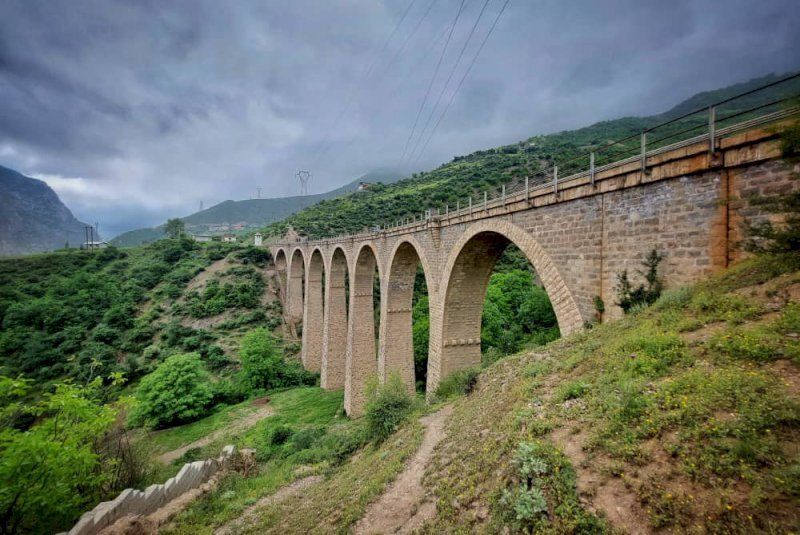
This route is considered the most attractive railway journey in Iran. As you embark on this path, you'll be greeted by breathtaking landscapes of northern Iran that you've never seen before. The journey starts with a typical railway from Tehran to Garmsar, but as you continue, you'll witness a dramatic change. The route takes you through mesmerizing mountainous jungles nestled against the mountains. Along the way, you'll encounter important landmarks, including the Veresk Bridge, which is not only a masterpiece of structural engineering but also an iconic symbol of the Trans-Iranian Railway. This remarkable bridge stretches 86 meters long and stands at an impressive height of 110 meters above the ground.
Qazvin-Rasht Route:
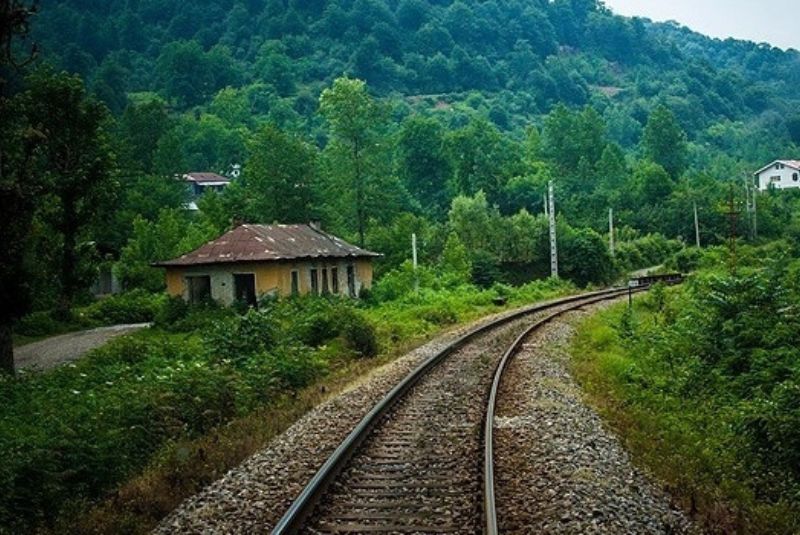
Although this route is relatively new, it has quickly become a competitor in terms of offering mesmerizing views. As you travel along this route, you'll be treated to heavenly jungles, picturesque paddy fields, and enchanting riverbanks. One highlight of this route is the longest railway bridge in the entire network, spanning an impressive 1,430 meters in length.
| Discover: Iran's Wildlife | A Nature Lover's Guide + Pics
Lorestan Touristic Route:
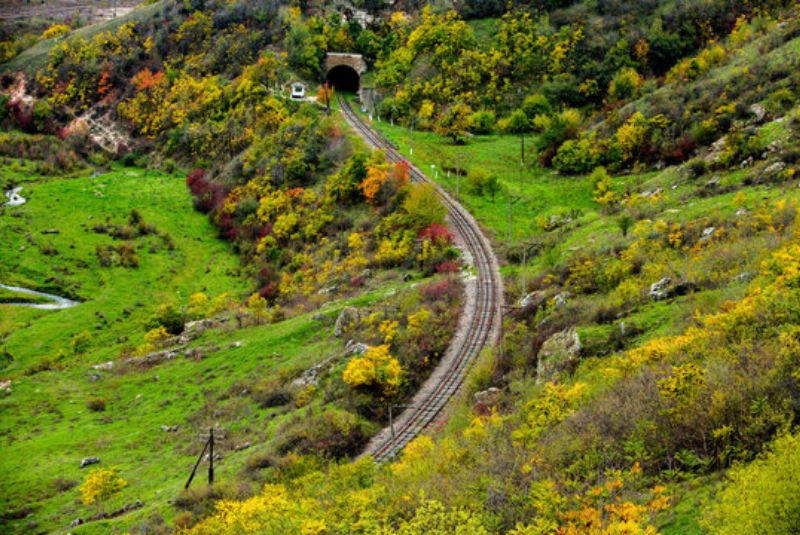
This scenic route spans 74 kilometers and is perfect for nature enthusiasts. The journey includes several stations where the train stops, allowing tourists to disembark and immerse themselves in the beauty of high mountains, lush valleys, and breathtaking waterfalls cascading down from the towering peaks. The stations are conveniently spaced approximately 20 minutes apart, ensuring that you won't miss out on any of the superb sceneries.
Unique Features of Iran National Railway
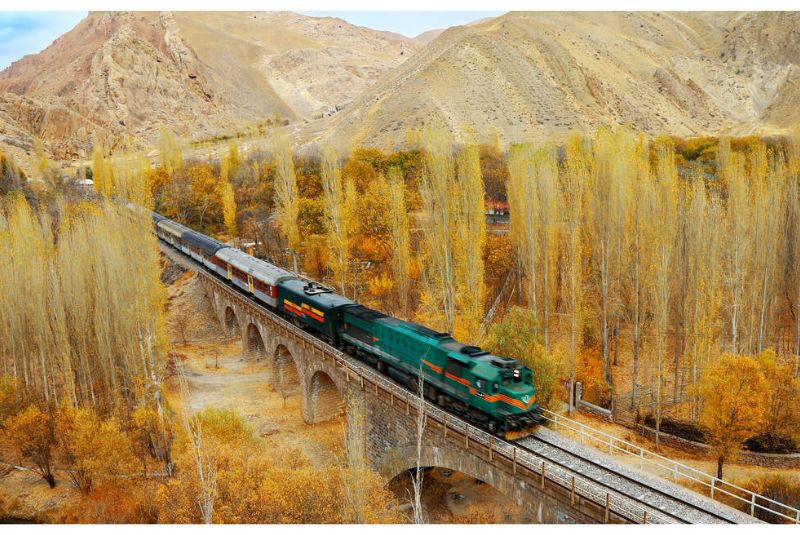
The Iran National Railway stretches an impressive length of approximately 1,394 kilometers, making it a crucial transportation network in the country. What sets this railway apart is its journey through four distinct climatic regions, each offering a unique and diverse landscape.
Starting from the Caspian Sea, the railway passes through the expansive Hyrcanian forests, a UNESCO Natural site known for its grandeur. It then continues through the magnificent Iran Mountain ranges, including the Alborz and Zagros ranges, showcasing breathtaking peaks and scenic beauty. As the journey unfolds, the route encounters rivers, highlands, plains, and even the vast Dasht-e Kavir desert, adding a touch of awe-inspiring barrenness to the scenery.
Along this remarkable route, you'll also come across Persian Caravanserais, ancient stops along the historic Silk Road, offering a glimpse into Iran's rich cultural heritage. This diverse range of landscapes and historical sites is accompanied by a tapestry of ethnicities, customs, traditions, and languages. For travelers seeking to connect with locals and explore new cultures and lifestyles, this adds an exciting dimension to the journey.
Iran Railway Map
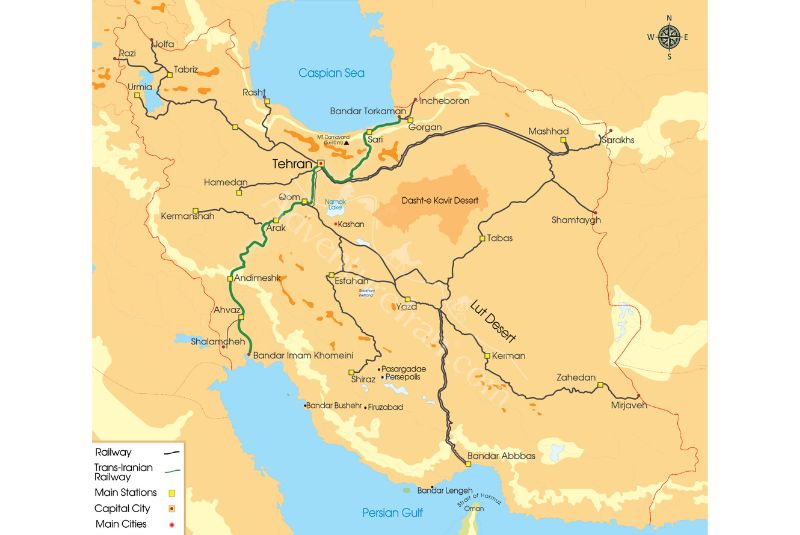
In this section, you can explore the map of the Iran National Railway, which displays the route of the railway tracks across the country. The map highlights the extensive coverage of the railway network, showcasing the various routes and connections within Iran. It provides a visual representation of how the railway lines traverse different regions, linking major cities and ports.
Starting from the port of Gaz on the southern Caspian Sea, the northern route stretches to Imam Khomeini port on the Persian Gulf coast. Along this route, important stations such as Ghaemshahr, Gaduk, Garmsar, Tehran, Arak, Dorood, Shahbazan, and Andimeshk are located.
The railway passes through diverse landscapes, including the Alborz mountains and the high pass of Firoozkooh, with tunnels and bridges facilitating the journey. It traverses the Varamin plain, reaching Tehran, and then continues smoothly towards Qom and Arak. Moving through mountainous areas in Lorestan, the railway enters Andimeshk and the Khuzestan plain, crossing bridges and tunnels.
The railway line extends through Dezful and Ahvaz, finally reaching its endpoint at Imam Khomeini port on the Persian Gulf coast via the Karun Bridge near Khorramshahr.
Over the years, additional lines have been connected to the Iranian railway, including Garmsar to Mashhad, Tehran to Tabriz, and Qom to Kashan, which were completed during the second Pahlavi period.
| Learn about: Iranian Traditional Houses
International Links of Iran National Railway
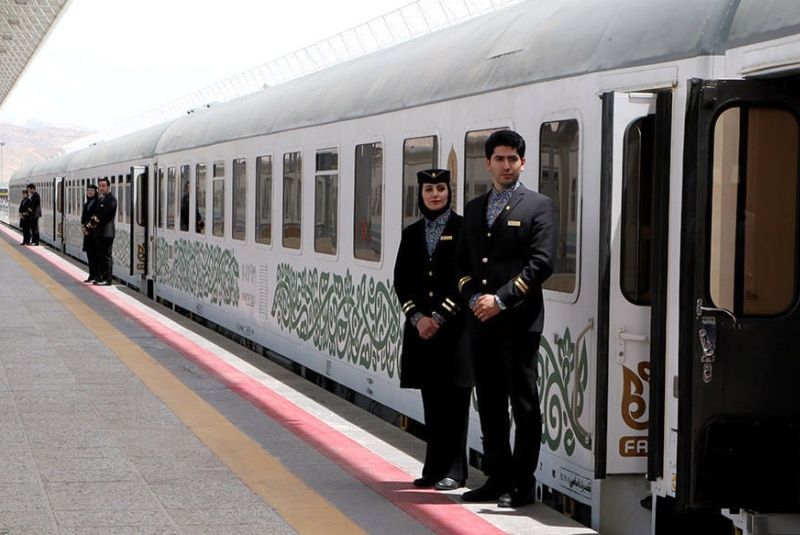
The Iran National railway provides connectivity to major parts of the country, except for the Southeast region. Iran's strategic location makes it a crossroads for both East-West and North-South transportation corridors, offering active or potential links to various countries.
To the west, the railway extends to Turkey at the Razi-Kapikoi border. A northern connection leads to Azerbaijan, the Caucasus, and Russia, with a bogie-changing station at the Jolfa border. Southern routes connect Tehran to the Persian Gulf ports of Bandar Imam and Bandar Abbas. Another line reaches the Caspian Sea, terminating at Amir Abad and Bandar Torkaman, forming part of the North-South corridor to Russia and Scandinavia. The northeast corridor connects Mashad and continues to the bogie-changing station at Sarakh. This line provides access to the sea for landlocked countries such as Turkmenistan, Uzbekistan, Tajikistan, Kyrgyzstan, and Kazakhstan. A recent connection from Mashad to Bafqh has significantly reduced travel time to the harbor of Bandar Abbas.
Bottom Line
The Iranian National Railway stretches over 1,394 kilometers and connects the Caspian Sea to the Persian Gulf, traversing four distinct climatic regions and showcasing the remarkable natural beauty of Iran. From the lush forests of Hyrcanian to the majestic Alborz and Zagros mountain ranges, from rivers and highlands to plains and the desert of Dasht-e Kavir.
The Iranian National Railway continues to evolve, with plans for future expansion and international connections and it beckons travelers to embark on an unforgettable journey, immersing them in Iran's natural beauty, diverse cultures, and rich heritage.
Share your story!
Comment below and let us know about your Experience.
Your story inspires others!


Comment
Leave a Comment